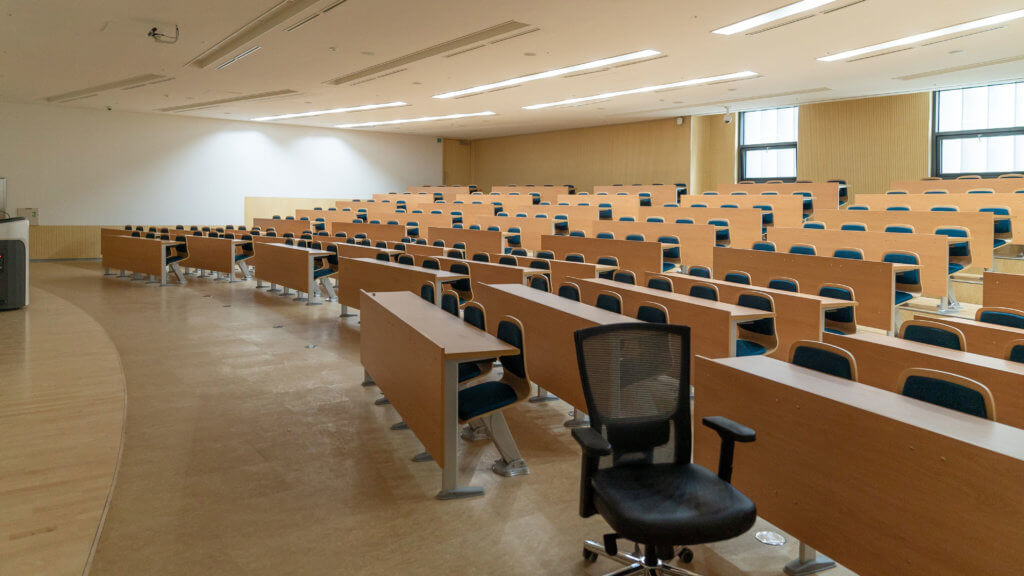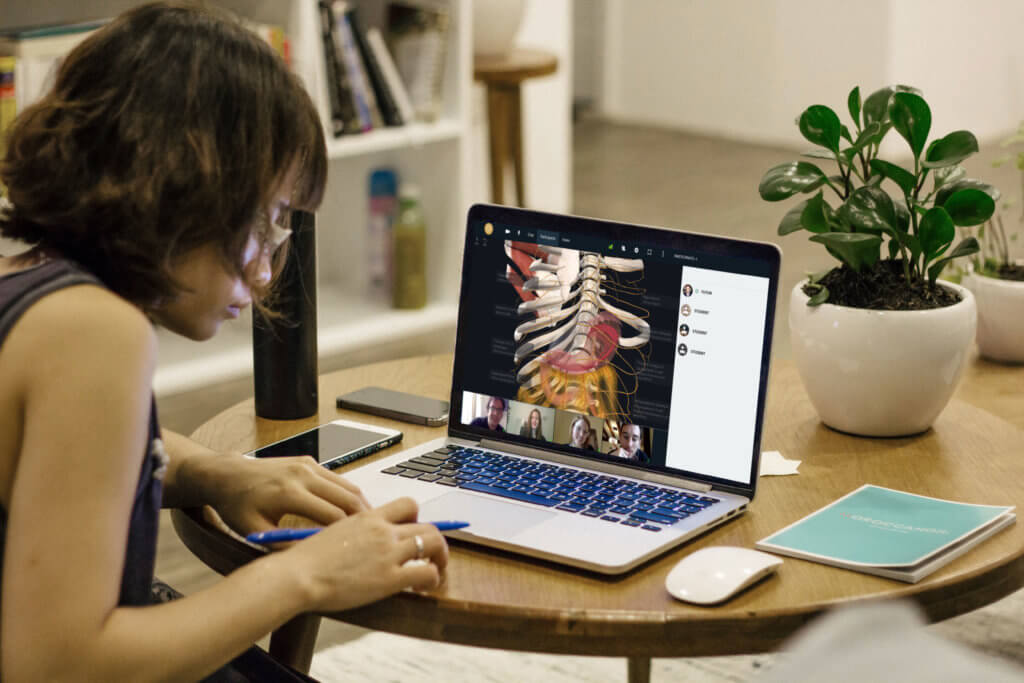The Digital Future of Education: Resilience through COVID-19 Lockdowns
Kayla Davidge
Beginning in March 2020, social distancing measures imposed to prevent the spread of COVID-19 forced millions around the world to adjust to a new norm: working and studying from home. Students and educational systems are typically among the most affected by disease outbreaks; according to UNESCO, school closures have broad social and economic consequences, especially for marginalized students and their families. Learning interruptions, confusion and stress for teachers and parents unprepared for distance schooling, malnutrition, childcare gaps, and increased pressure for health-care systems are just some of the hardships that can arise when schools close their doors during a pandemic.

University Closures
Demand for online learning has surged globally as a result of mass school and university closures caused by the Corona virus - affecting over 1.5 billion pupils and students. Without previous preparation, experts say such an immediate switch was a big challenge for students and institutions alike, because teaching and learning virtually requires a distinctly different skillset than what’s needed in the classroom.
Native digital education institutions like EDU, however, have remained essentially immune to the impacts of COVID-19 shutdowns. As all theory is taught via a state-of-the-art interactive online platform, EDU students have experienced no interruption to their medical studies. While other institutions of higher education were forced to shut down, a new cohort of students was able to begin their studies at EDU as usual in April this year and will start their second trimester in August. Thanks to the digital environment, there is no risk of infection for the students and instructors during the theoretical learning phase; examinations at EDU are also normally held online. In the case that students do become infected with the virus in their private environment and experience mild symptoms, they can continue to attend online courses, even if in quarantine at home, enabling them to never miss a single lesson.

Online learning at EDU
While heavily relying on digital technologies to achieve educational goals may have been previously unfamiliar to many, now education technology (EdTech) is seen not only as a complement to traditional teaching methods, but rather as a viable substitute with huge potential. EDU’s Chief Operating Officer Alexandra Cosma comments, “Not all universities have managed to implement distance learning during Corona, many schools have not, and quite a few will be treating it only as a temporary solution. However, it’s been a clear signal among institutions that it’s time to create a digital learning strategy, so the pandemic is definitely accelerating the trend towards digital.”
Inside Higher ED predicts that following the crisis, there will be a dramatic increase in blended learning, and digital education will be at the forefront of strategic priorities at each school. There is also increasing demand from the student side for more adoption of digital technologies in the learning experience. In the UK, research shows that 40% of first-year university students desire more help with self-studying and 75% wish to incorporate new digital tools to assist learning. In Australia, the majority of students long for a more digitised and blended student experience.
Across Europe, there have already been educational initiatives which focus on encouraging innovative teaching and learning strategies in a digital environment, as well as further development and utilization of digital resources. Beyond that, there are programmes such as the Biblionet initiative in Romania and Poland’s Digcoming that support teachers to develop professionally by acquiring new digital competencies.
Benefits of distance learning
The advantages of digital education are becoming more apparent than ever before. Forbes discusses how E-learning is an “attractive alternative” to traditional classroom models, with increased flexibility of study location and pace of learning. Vanida S., student in Human Medicine, chose EDU because studying digitally allows her to travel to visit family around the world while attending virtual lessons. The online environment also creates more space for innovation in both instruction and learning methods. As Ms. Cosma says, “It’s a new medium, and with a new medium you can open up new ways of teaching and new pedagogies that are difficult to replicate in traditional classrooms. These include engaging in personalised learning, preparing flipped classrooms, and implementing multicultural exchange and collaboration at a rate that wouldn’t be possible in the traditional classroom setting.” Furthermore, evidence shows that incorporating digital technologies into curricula improves learning outcomes for individual students, compared to studying from outdated textbooks, while other research shows that technological solutions encourage greater collaboration in a university setting.
EDU strives to educate future healthcare professionals in the most modern way possible, acting as pioneers for innovation in the outdated model for medical education, which has operated in the same way for the last 100 years. Their award-winning digital learning platform is equipped to educate prospective doctors at scale, making quality medical education accessible no matter where students are located. Numerous scientific studies have proven that using virtual and augmented reality along with 3D tools are both more effective than traditional textbook and cadaver methods to teach anatomy and increase student satisfaction. Thus, EDU incorporates advanced technological learning tools such as 3D4Medical and Draw it to Know it into the curriculum, which helps foster an environment for more active engagement with complex medical content.
Emerge Education mentions EDU as a good example of a Challenger Trailblazer in the higher educational landscape, defined as “Extremely innovative…stripping down fundamental traditional pillars of education including campuses, lectures and/or faculty, and increasing tailoring of the student offer and potential for scale”.
Of course, remote learning has its own limitations. Some feel they might be isolated due to a lack of exchange between students, or that one can become more easily distracted when learning online. Technological difficulties can also arise, making it difficult to follow a lesson. EDU endeavours to create an inclusive learning community, with a strong emphasis on group work and personalised help from tutors and mentors, so that students always feel supported and connected to others throughout their studies. Vanida S. talks abosut the benefits of learning in small groups, as opposed to sitting in a lecture hall with 150 to 200 other students; the environment is much more close-knit and personal, she says. She had already begun a Bachelor’s programme at a traditional university in the U.S. before studying at EDU, and finds that she has even more contact to other students now than in her previous programme. The learning platform provides a space for students to meet to study in groups outside of class time to collaborate on projects, share documents, and access learning resources in one convenient location. Moreover, working together on a real-world patient case each week means that students either see each other in class, talk over the phone, or meet on the platform every day, and friendships form in the study groups. EDU also provides IT support when needed, so students can focus on their courses rather than technological problems.
The corona pandemic has offered an opportunity to reimagine education in a globalised, digital world. Students, teachers and educational systems have for the first time turned to technology to achieve all or most learning goals, figuring out along the way what works and what doesn’t when removed from the traditional classroom setting. While it will certainly take time for the world to recover following the pandemic, there is great hope for the future potential of more widespread adoption of EdTech as it becomes a strategic priority for educational institutions across the board. EDU is prepared to lead by example as we enter an exciting new phase of innovation in education.
If you or someone you know is interested in studying medicine, EDU has 6 student intakes per year for their innovative 5-year accredited degree programme in Human Medicine. Visit www.medical.edu.mt for more information and to apply or join a Virtual Open Day to learn more.
You can also read our blog article about EDU Medical School.
5-HT Chemistry & Health Newsletter
Want the latest tech and industry news, events, relevant info from the ecosystem and more?
Subscribe to 5-HT Newsletter now Subscribe to 5-HT Newsletter now
Become part of the 5-HT Chemistry & Health
Exchange ideas with innovative startups and future-oriented companies in our ecosystem. We look forward to meeting you!